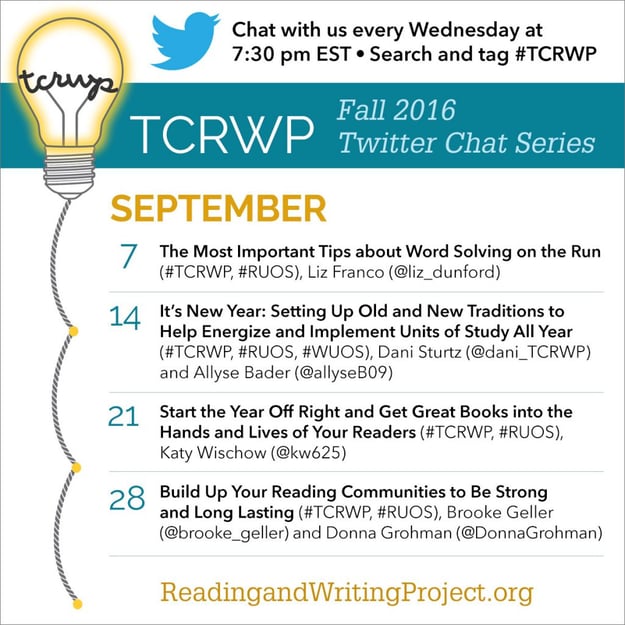 TCRWP Blog Post by Anna Gratz Cockerille
TCRWP Blog Post by Anna Gratz Cockerille
In a typical artist’s studio, materials are organized meticulously. There is a place for everything, and the artist knows exactly where to find each and every tool the moment she needs it. There are routines for gathering supplies, for working, for cleaning up. Not a moment is wasted on housekeeping. In this way, all of the artist’s energy can be spent on the non-linear, often messy, unpredictable process of creation.
Reading and writing workshop classrooms are often likened to artists’ studios. Because routines and the location of materials are predictable, children are freed up to spend their energy on the creative process of reading or writing, not on finding materials or on negotiating who they’d like to sit near in the meeting area. Setting up the routines and traditions that will be part of the fabric of your reading and writing workshops as early as possible is key to launching a great year of learning.
As you set up the routines that will be the backbone of your students’ learning this year, you might ask yourself questions, such as:
- Where will children gather for whole class lessons?
- How will children move from their individual spots to the meeting area? Will there be a signal or some other way to call them to gather? Will they come all at once or in groups?
- How will they move from the meeting area back to their independent work spots?
- Where will they work independently? Will they choose their work spots daily or will they return to the same spot each day during a unit?
- Where will children meet to work with a partner?
- Where will children go to gather materials they need for writing? How will you organize the materials to set children up to use them wisely and independently?
- How and when will children choose their independent reading books?
- Where and how will students store their materials?
- How will each reading and writing workshop end?
- What traditions will you establish that are unique to your and your students?
At this week’s Twitter chat, staff developers Dani Sturtz and Allyse Bader will lead the TCRWP community in discussing ways to plan for and establish routines and traditions for the year. Join to share and collect a wealth of tips and ideas. As always, we welcome photos.
Each Wednesday night at 7:30 pm eastern, The Teacher's College Reading and Writing Project hosts a Twitter chat using the hashtag #TCRWP. Join @dani_TCRWP and @allyseB09 to chat about setting up traditions in your classroom tomorrow evening.
Not on Twitter? Take Heinemann’s free Twitter for Educators course here.


